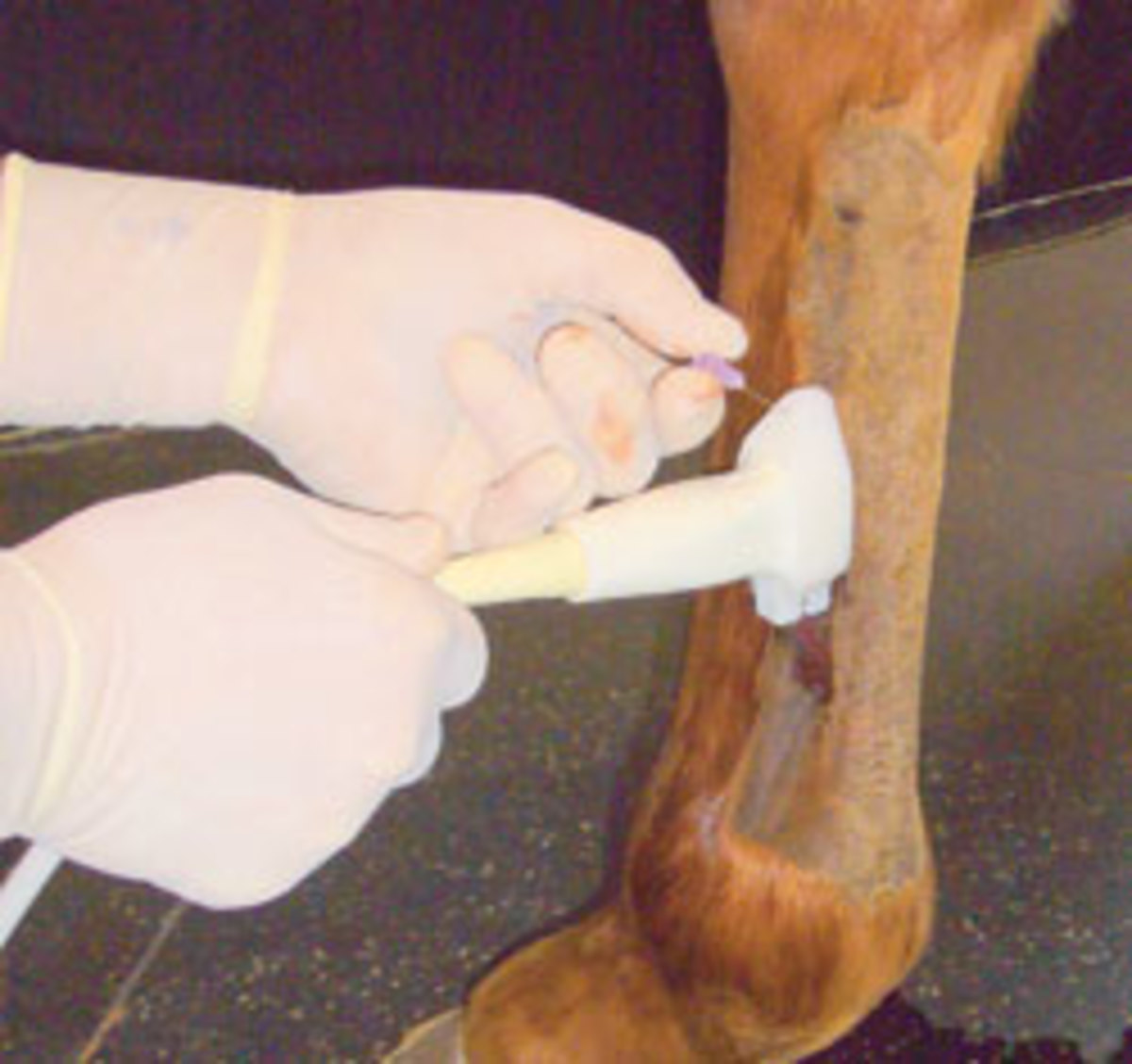
I’m sure everyone has heard of stem cell research and its implications in human medicine. I would like to discuss the status of stem cell treatment modalities currently being used and developed as they relate to the horse.
First of all, I’ll briefly explain the advantages of stem cell therapy in general. Stem cells are a primitive or basic cell that have the ability to reproduce in significant numbers and to evolve into specific types of cells depending on how they are handled and the environment they are put into. Along with the building blocks of the cells themselves, there are also growth stimulating factors emitted that encourage healing.
The source of stem cells being used in treating problems in the horse are currently from the patient. These cells are harvested from blood, bone marrow or fat, depending on the lesion to be treated and the system each practitioner is using. The collected material is then treated or incubated to encourage reproduction of numbers of the desired cell type to be used to treat the problem.
Currently, this form of therapy is being clinically used in the horse for orthopedic problems, most commonly injuries to tendons and ligaments. The classic and most common injury that threatens the career of a racehorse is a bowed tendon. In our Western performance horses, suspensory ligament tears have been very problematic in affecting a satisfactory “cure.”
The reason for these problems is that the natural healing process results in fibrotic scar tissue. This type of tissue is inelastic and structurally weak, so recurrence of problems has been common when these horses are returned to intended athletic use. With stem cell therapy intervention, these structures tend to heal back more to their original form and therefore are more functional.
The application of this stem cell medium is to inject it into the lesion through a small-gauge needle with ultrasound imaging guidance. To be effective, this procedure has to be done early in the healing process before a typical “scar” has formed. Time wise, that usually means within the first 30 days post injury.
Depending on the size or location of the lesion, more than one injection is sometimes indicated. Of course there are other parts of rehabilitating horses with these injuries, such as supportive bandaging, controlled exercise and, yes, time.
This modality of treatment is in its developmental stage or is, as we say, “a work in progress.” I think it will evolve into significant improvement in handling bone fractures, cartilage damage and, as I’ve already mentioned, is already recognized as a valuable clinical tool in tendon and ligament injuries.










